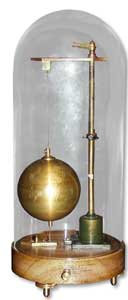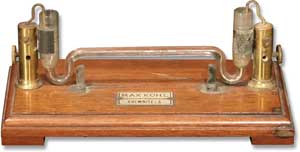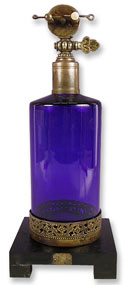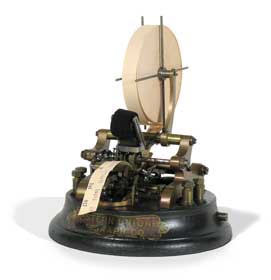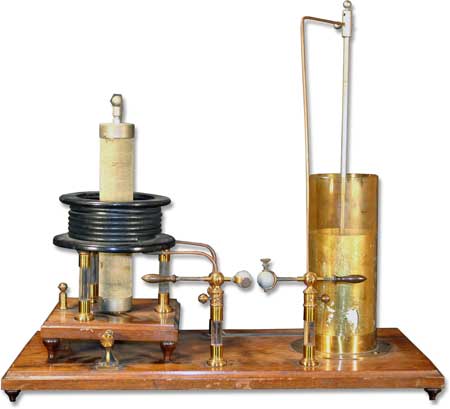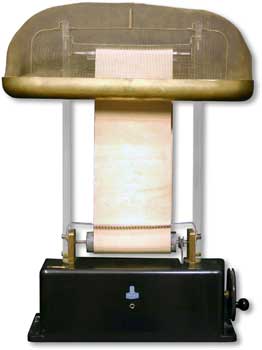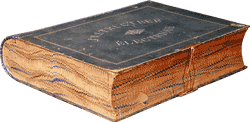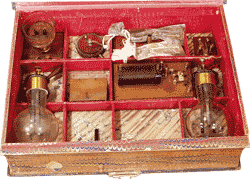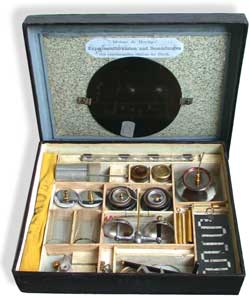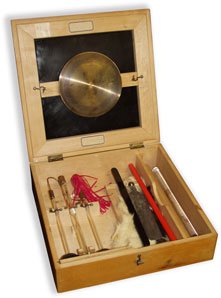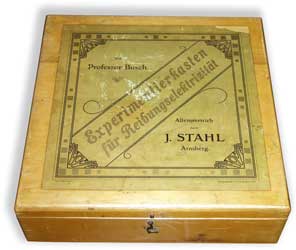| Contact |
| Back | Next | Home |
Other Scientific & Philosophical Apparatus
|
Early Electric Seismometer
Used for measuring electric charge. A small drop of mercury in the horizontal capillary tube moves under the influence of an electric field applied to the two electrodes. The amount of charge is indicated by the distance the drop moves. |
Volta Hydrogen Lamp 2nd Qtr, 19th Century
Volta lamps were very popular demonstration devices due to the
dramatic
Electrolysis Cups Two identical pieces, each made of hand-blown glass cups 8-1/2" high mounted with wax on 6-1/2" mahogany base with elaborate binding posts on either side of cup. Pictured and described as a "Decomposing Cell" in Davis' Manual of Magnetism pg. 42, fig 28 (1848) and Pike's Catalog (1848) Vol. I pg. 340, fig. 402. |
Early Electrical Experiment kits
Electrical Experiment Kit
|
|
|
|
||
|
|
|
Early Selenium Cell 1904 |
|
| Contact |
| Back | Next | Home |
